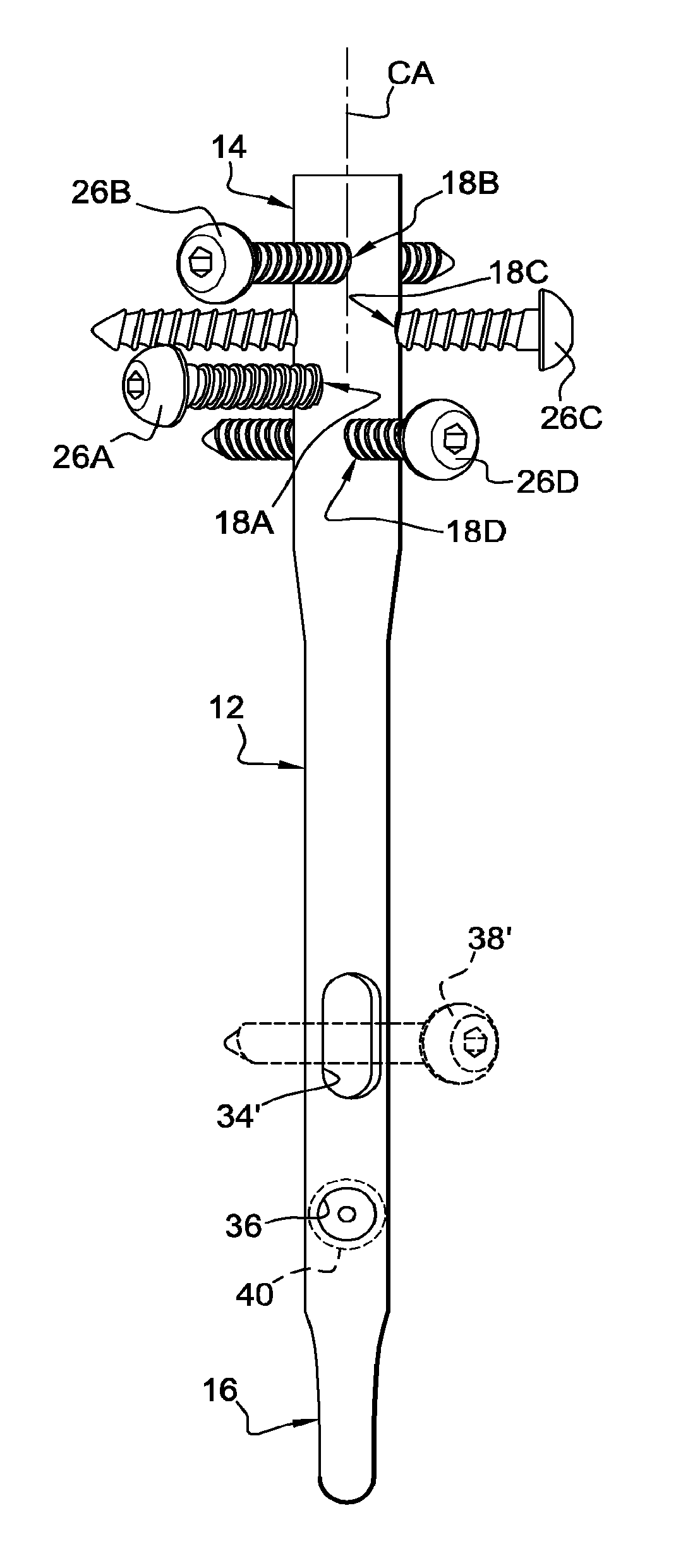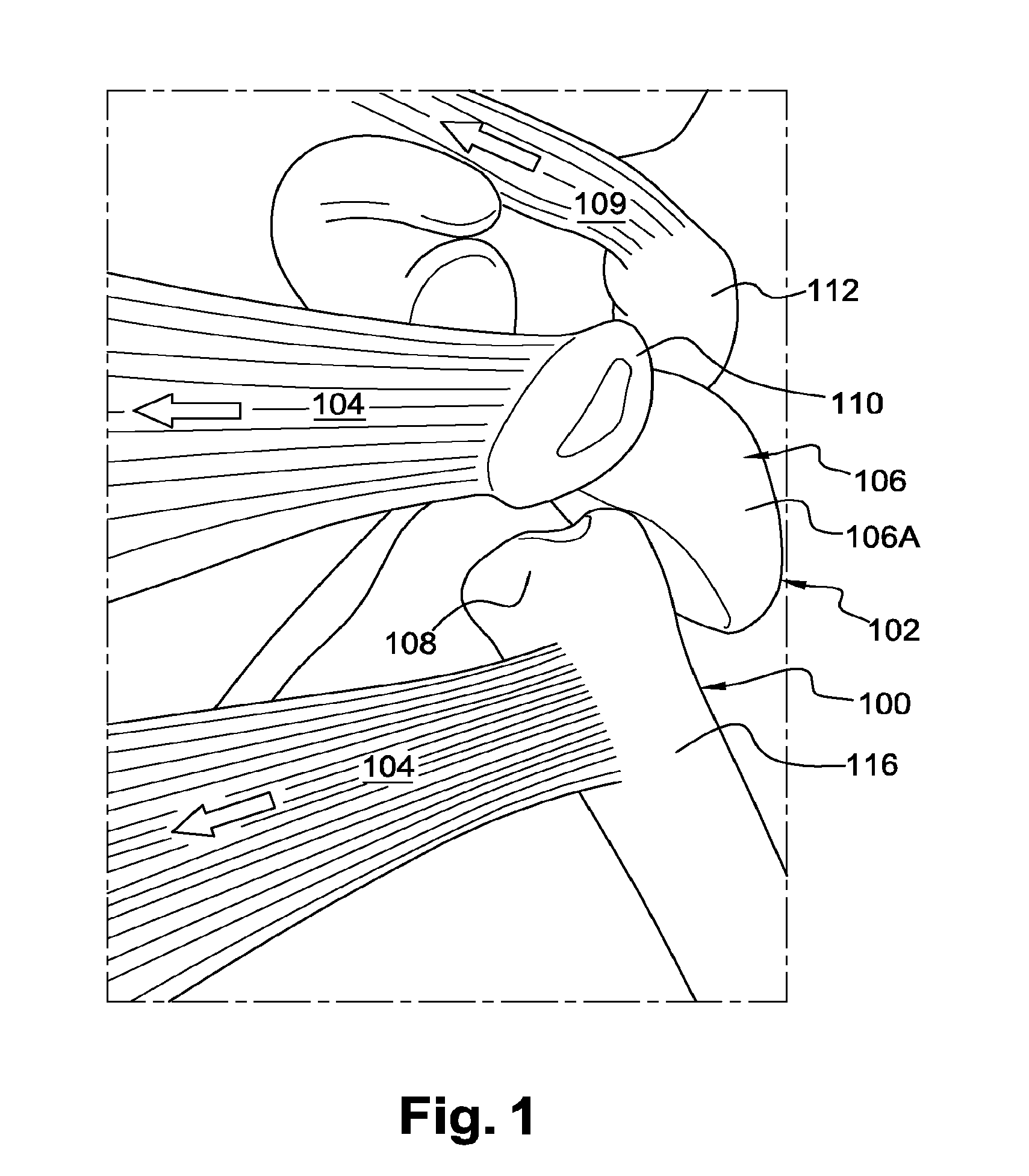Surgical technique and apparatus for proximal humeral fracture repair
a humeral fracture and humeral nail technology, applied in the field of humeral nail, can solve the problems of not being entirely suitable for treatment of more complex fractures, not providing a mechanism to reduce fractures and retain fragments, and not providing a mechanism to adjust the location of fragments
- Summary
- Abstract
- Description
- Claims
- Application Information
AI Technical Summary
Benefits of technology
Problems solved by technology
Method used
Image
Examples
Embodiment Construction
[0032]FIGS. 2A, 2B, 3, 4A-E and 5 show a schematic view of a humeral nail 10. As shown in FIG. 3, this humeral nail is intended to be implanted in the humerus 100, shown in FIG. 1 already described, of a patient to fixate a fracture F at or proximate the greater tuberosity 110 and lesser tuberosity 112 of the proximal humerus. The humeral nail 10 includes a substantially linear shaft 12 having a proximal portion 14 and a distal portion 16. The humeral nail 10 is introduced through the humeral head 106 of the humerus 100 and extends within the humeral shaft 116 such that the distal end 16 of the humeral nail 10 is positioned within the medullary canal of the humeral shaft 116.
[0033]It will be noted that the shown humeral nail 10 is designed to be implanted in the right humerus of a patient. A humeral nail that is to be implanted in the left humerus of a patient will be a mirror-image of the humeral nail depicted in the figures.
[0034]In the preferred embodiment, small incisions are ma...
PUM
 Login to View More
Login to View More Abstract
Description
Claims
Application Information
 Login to View More
Login to View More - R&D
- Intellectual Property
- Life Sciences
- Materials
- Tech Scout
- Unparalleled Data Quality
- Higher Quality Content
- 60% Fewer Hallucinations
Browse by: Latest US Patents, China's latest patents, Technical Efficacy Thesaurus, Application Domain, Technology Topic, Popular Technical Reports.
© 2025 PatSnap. All rights reserved.Legal|Privacy policy|Modern Slavery Act Transparency Statement|Sitemap|About US| Contact US: help@patsnap.com



